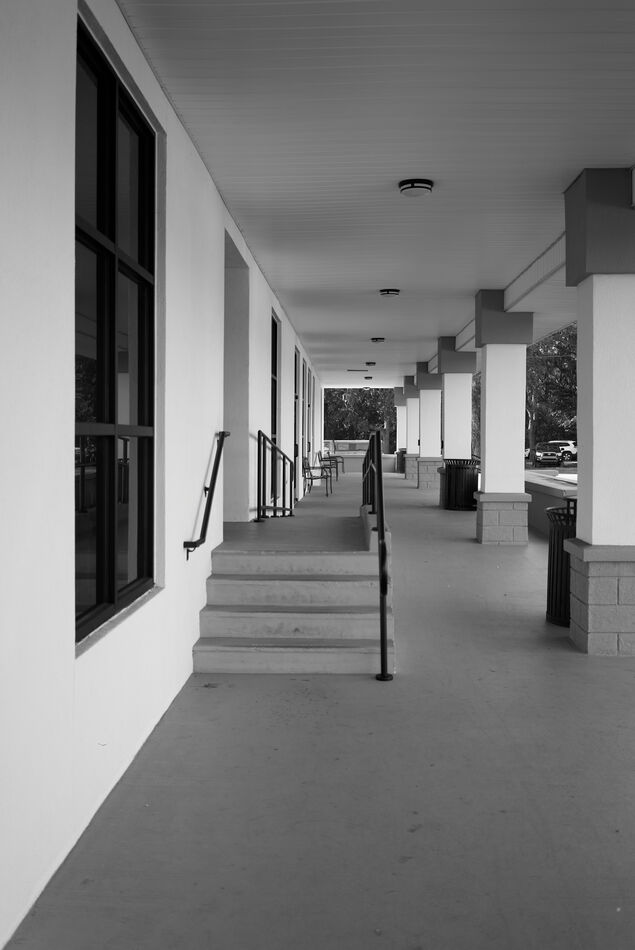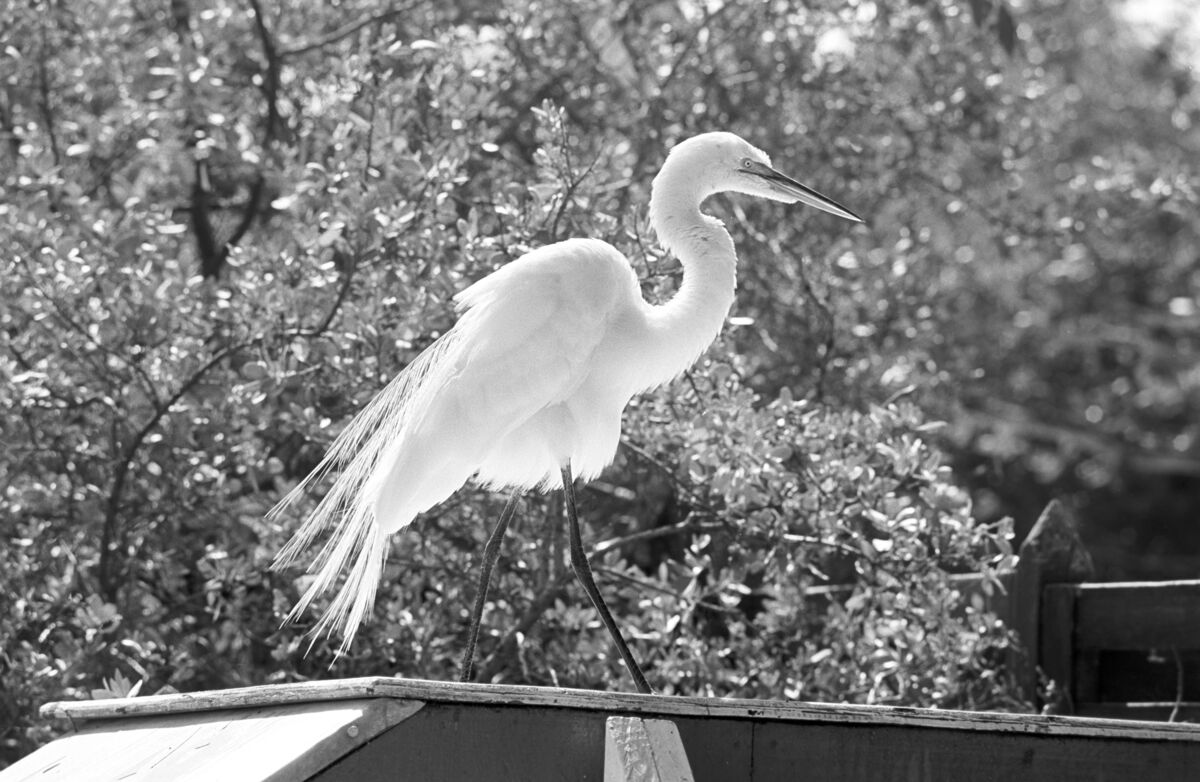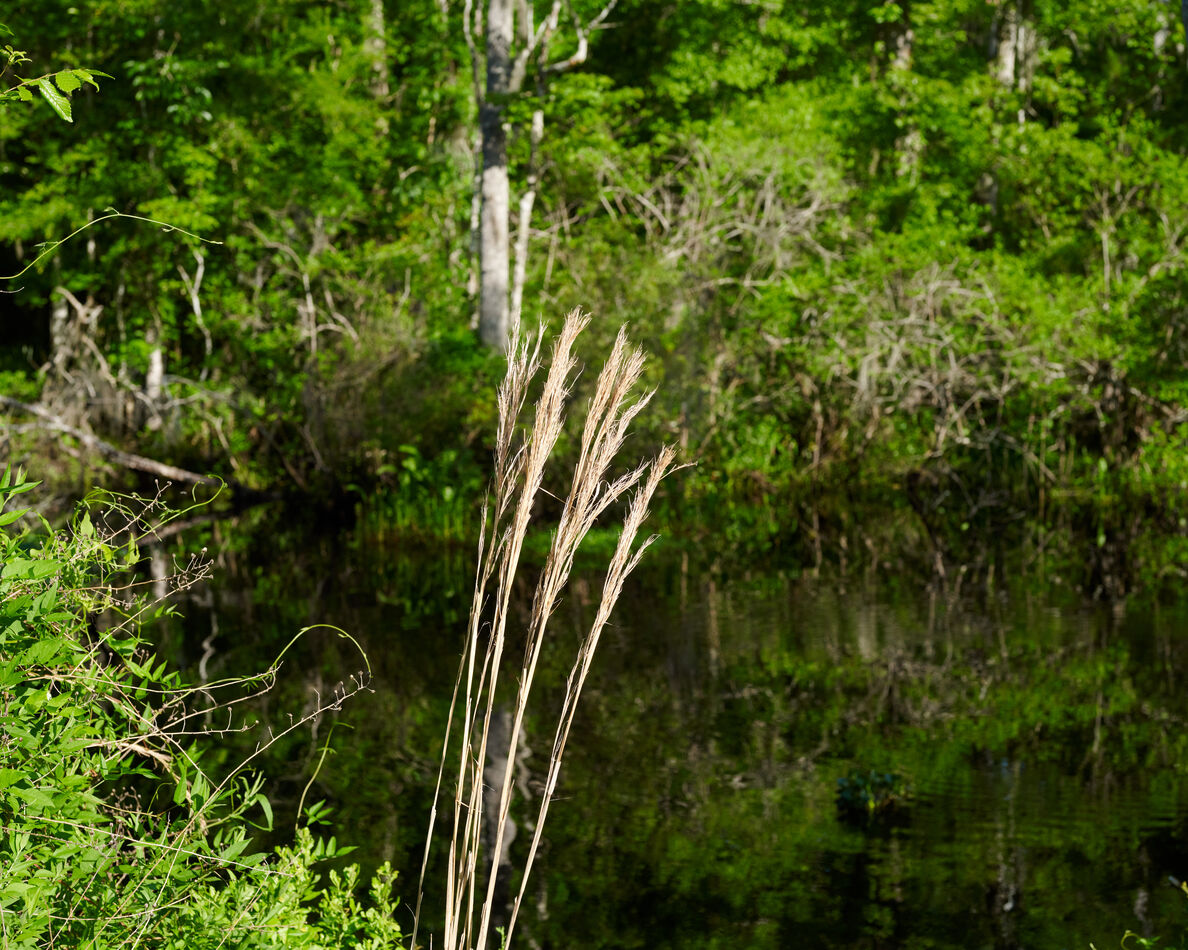Posts for: selmslie
May 1, 2024 21:28:10 #
Ysarex wrote:
And you're wrong again here to suggest that understanding how DOF distributes around the focus plane is only helpful with images containing content at infinity. (Do you have some hang up over hyper focal distance?) It can be helpful with images that contain important foreground content and background content that is not at infinity.
It doesn't have to be all the way to infinity. The same thing happens when the distance to the farthest limit is practically indistinguishable from infinity. You can focus on a mountain miles away (or even the moon) and when you then focus on something 1000 feet away as in your most resent example, you will find that you hardly need to change the focus.
And yes, for practical purposes, relying on hyperfocal distance (HD) can be risky. When you do, anything close to infinity will be at the far limit of the DOF just like anything at HD/2. The risk is that, if you crop or if someone gets closer than the normal viewing distance (it is more likely if you make a print larger than 8x12") they are likely to see blurring at both extremes. That's because the circle of confusion changes with the crop and with the reduction in viewing distance.
You are still fixated on landscapes, scenes that can range from very close to very distant detail. Those are the kinds of challenges that can be addressed with focus stacking, only slightly more work than trying to use a DOF calculator in the field but more effective.
Try something other than landscape like the example below.
Nothing interesting is too far away or too close to the camera.

May 1, 2024 16:19:47 #
Ysarex wrote:
And that, of course, is not what you said; "not really that useful" is not the same meaning as, "No, it's not really helpful." What you're saying now is a subtle change. "not that useful" leaves open some room for usefulness. So yes you were wrong and now you'd like to amend what you said?
I’m not going to argue semantics with you.
If you don’t understand what I have said it’s on you.
Others can see my point because they are not limiting themselves to landscapes.
What you are claiming has no relevance to o portraits, human or animal, because there is rarely any foreground. It doesn’t relate to BIF or sports because the subject is really the only important part of the image. And it’s not really that important unless you are shooting landscapes because that’s about the only time there is anything important at infinity focus distance.
Demonstrate your claim with any subject other than landscape. We’ll all be surprised if you can.
May 1, 2024 15:10:29 #
Ysarex wrote:
I never said it was. I presented the issue as a question to Longshadow. It's not helpful to understand that DOF distributes unequally around the focus plane?
You're the one who made the universal statement: "No, it's not really helpful."
You're the one who made the universal statement: "No, it's not really helpful."
Look at the six images I just posted.
1. The orchid was a closeup taken with a macro lens. I focused on the center of the bloom. There is very little more DOF behind that point than closer to the camera. But what's closer to the camera? Nothing but air!
2. The VW was taken with an A7 III and a 35mm lens at f/8. I focused on the middle door. Some DOF extended into the bus. But what's closer to the camera? Nothing but air!
3. The airplane was taken with the A7 II (while it still had the Bayer Array) with a manual focus Zeiss 35mm lens at f/8 or f/11 (no computer contacts so I am relying on memory). I focused on the lettering on the fuselage. The entire plane is sharp but not the one behind it or the guy walking into the frame.
4. The flamingos were taken with a Df and a 150-600mm Tamron at 600mm at f/8. There was enough DOF to cover the birds but not the closer or more distant vegetation.
5. The B&W portrait mode image of the building was taken with the A7 II (now without the Bayer array) with a 35mm lens at f/8 (the DNG conversion lost track of the actual f-stop). I focused on the second column on the right. The background is sharp but the foreground isn't. But the foreground contains large geometric shapes. The eye is led into the picture, away from the foreground, so the viewer may not notice that. This is the only image I might redo with the focus closer to the camera because the loss of a little distant sharpness would do no harm.
6. The nighttime shot of the restaurant was taken with the A7 II and the Zeiss 35mm lens at f/8. I focused on the signs in the window and the DOF reached into the restaurant (despite the reflections on the wavy glass) and far enough back toward the camera to keep the small blue sign for the shrimp basket. You can download the 2k result below to your computer to see how well things worked. out.
These are common scenarios that do not involve distant landscapes or hyperfocal distances.
That's why I said that knowing that the DOF is unequal in front of and behind the focus point is not really that useful, especially if you focus a landscape close to the hyperfocal distance.
I have always known that the DOF distribution is unequal bit that is rarely an issue unless you need it to reach to infinity.
May 1, 2024 12:03:20 #
Ysarex wrote:
Rubbish. It's just the best example to illustrate that you're wrong.
What you use for landscape is not universally relevant. Photography is not all about landscapes.
There is DOF in the images below but what's beyond their DOF is not important, nobody cares.
These particular subjects are more important than their surroundings.
You need to develop an understanding of something beyond landscape photography.
Enough DOF for blossom

Enough DOF for vehicle

Enough DOF for airplane

Enough DOF for the birds

Nobody cares about the DOF, just the composition

Nobody cares about the DOF, just the closing of the restaurant

May 1, 2024 07:46:47 #
Ysarex wrote:
The issue is specific. I noted that understanding how DOF distributes in front of and behind the focus plane can be helpful for a photographer in selecting a focus point:
You are hung up on a hyper-focal technique for landscapes that extend to infinity. You are a one-trick pony.
That method does not work well with most other situations.
There is often a specific subject in the frame. That is where we want to focus and where DOF is completely different.
May 1, 2024 05:37:23 #
Wallen wrote:
The main take away from medium format is the bigger field of view and larger pixels, in number and physical size.
To some degree they do help capture smoother gradients/colors but sensor design, analog to digital converter & the bit depth are the real players when it concerns banding. An inappropriate monitor may also show banding even when the file does not have it.
To some degree they do help capture smoother gradients/colors but sensor design, analog to digital converter & the bit depth are the real players when it concerns banding. An inappropriate monitor may also show banding even when the file does not have it.
And your monitor doesn't care whether 24MP came from a crop, full frame or medium format sensor.
Remove the EXIF and it's just a bunch of pixels.
May 1, 2024 05:13:10 #
selmslie wrote:
Anybody can play with a DOF calculator to see how that works, But that only tells a small part of the story.
Anyone can get the every thing they need to know about DOF from the Cambridge in Colour TUTORIALS: DEPTH OF FIELD including lots of illustrations and links to other sources. They cover lots of situations besides hyperfocal distance and landscapes.
There is no point in for us to continuing arguing about this subject here.
May 1, 2024 04:50:49 #
Ysarex wrote:
Both the foreground and background in that photo are acceptably sharp ...
It actually looks pretty awful, like you sharpened the daylights out of it in Photoshop. It does not look like it would stand up to any enlargement. If you want to be credible, the PP should be minimal.
But you have only shown one aspect of DOF, outdoor landscape focused on or near the hyperfocal distance. Anybody can play with a DOF calculator to see how that works, But that only tells a small part of the story. Is that the only type of image where you care about DOF?
Why not try a different subject, where we can actually see an in-focus subject and out of focus background (and possibly foreground). An image can be effective with a limited DOF.
1985, 35mm Ilford FP4 film developed in Microdol X, scanned only and no PP, printed many times

(Download)
May 1, 2024 00:07:06 #
Ysarex wrote:
Big pile of BS, and you remain wrong. I wanted the foreground and background in focus. Understanding how DOF distributes in front of and behind the focus plane helped me do that. I knew nearly all of the DOF would be behind the focus point.
That's the final proof that you don't understand DOF!!
You can't get the foreground and background "in focus". Only someone ignorant of the subject would make that statement.
There is only one plane of focus. Depending on the lens design, that plane might not even be flat.
Everything closer to or further from the camera is out of focus and gradually gets worse until you notice it. That's why it gets worse as you crop and enlarge the image.
Go to the back of the class.


Apr 30, 2024 20:55:45 #
Ysarex wrote:
Wrong as usual: https://www.uglyhedgehog.com/t-805958-4.html#14593833
You didn't post the images, just a link to a bunch of other links. That means that almost nobody would take the trouble to look at them and nobody would learn anything from them.
Just looking at the first two, with a hyperfocal distance (HD) between 14 and 15 meters, you could have focused anywhere beyond 16 meters and gotten the far limit of infinity within the DOF because the DOF is theoretically infinite. That's really simple and it's what an amateur could have done with a film camera and the markings on any of the old manual focus lenses that lead you to HD.
Doing that, you would still end up with the same mediocre snaps that anyone who used hyperfocal distance focusing believed would produce a "sharp" image from HD/2 to infinity. But they soon found out they were wrong when they started to print one of those images.
Experience will tell you that you can't get something for nothing. By relying on hyperfocal distance you overlook the sad fact that your image will not be sharp from HD/2 to infinity. What usually happens is that the most distant parts of the scene are so close to the DOF limit that you can't make a large print without revealing a pretty soft image in the distance, as you have shown.
No matter what you say about whether there is more DOF beyond the focus distance, it's not a reliable bit of knowledge. You are better off focusing on what's important and that may well be far past the HD.
And if you really want to talk about DOF, you need to include examples where the background is deliberately out of focus.
Apr 30, 2024 17:51:28 #
CHG_CANON wrote:
Why are you casually intermingling pixels with bit-depth with colorspace? I usually ignore your 20-page back n forth with other members on technical details. I'm starting to see why they get that long ....
They are pure B&W tonal values. Colorspace has nothing to do with it.
Maybe now you can see why the back and forth goes on until the penny drops.
Apr 30, 2024 17:44:19 #
CHG_CANON wrote:
It's hard to understand the workflow, which might be the root-cause of the issue.
The TIFF was created by placing a gradient from 0 to 65535 (black to white) on a blank sheet using Picture Window Pro v7.
Since the base image is not 65,536 pixels wide, the separation in TIFF values is about 33 units per pixel.
The TIFF was saved and then converted into a JPEG with values from 0 to 255. Since the image is a lot more than 256 pixels wide, each value covers a band with a finite width in pixels, about 8 pixels per JPEG value.
The banding is visible because a one unit change in JPEG value is sharpened by our visual perception, an optical illusion.
C1 had nothing to do with it. Neither image was touched after being created.
Apr 30, 2024 16:51:48 #
Ysarex wrote:
And of course the important thing is I did post other examples.
Not on this thread.
Ysarex wrote:
Did precisely the same thing as the grass/lake photo here:
https://www.uglyhedgehog.com/t-805030-1.html
An understanding of how DOF distributes around the focus plane helped me take the photos and get the result I wanted.
https://www.uglyhedgehog.com/t-805030-1.html
An understanding of how DOF distributes around the focus plane helped me take the photos and get the result I wanted.
Posting a condensed version of an image does not illustrate DOF.
Posting a full version of an image does a better job.
These two images may not be earth shatteringly beautiful but at least they are on-topic and their sharpness does not make me look like a fool.
Apr 30, 2024 16:32:12 #
MJPerini wrote:
RG has this correct, Best practice for critical work is to to shoot RAW and keep the greatest bit depth and gamut (color space) for as long as possible while editing. (This helps avoid banding)Then output a file appropriate to the intended use. ...
The optimal approach is to do all of the editing during the raw file conversion using parameter driven edits to achieve an end product.
Lightroom and Capture One do this naturally. They let you redo or remove edits without having to go back and repeat anything.
My editing ends once I export from C1 although some might want to do some additional things that C1 and Lightroom can't handle.
Apr 30, 2024 16:13:30 #
profbowman wrote:
Yes, you have given us a good calculation to remember. I do remember reading somewhere about a dpi requirement of 600 being stated. ...
Early black ink dot-matrix and laser printers used 600dpi as the standard to produce text that was as good or better than what you could get from ordinary typewriters. Teletypes and other machines for typing text from computers were much more crude.
Although 600dpi was better than 300dpi for text, it was not good enough for printing gray scale images. It didn't work for color images.



